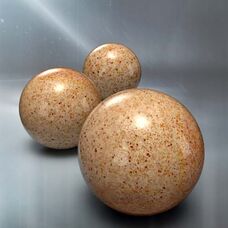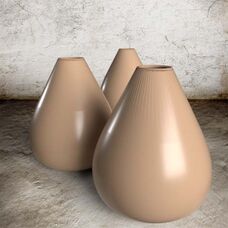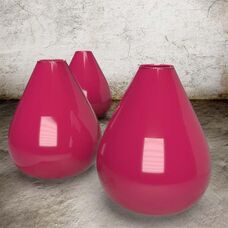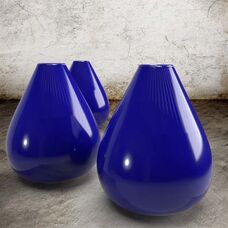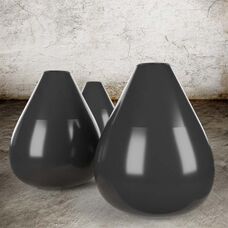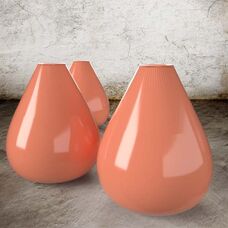Stoneware Glazes
CRYSTAL MARBLE - Stoneware Effect Glaze
Quantity: 40 g. (1.41 oz.) If you need larger quantity, please askFiring temperature: 1200-1280°C&nb..
1.49€
GALAXY - Effect Glaze Stoneware Matt Semitransparent by Degussa
GALAXY is Cone 7 glaze that looks like high-fired reduction porcelain glazes. Color effects and other reduction surfaces..
1.49€
ROYAL DREAM RED - Stoneware Effect Glaze
Quantity: 40 g. (1.41 oz.) If you need larger quantity, please askFiring temperature: 1200-1280°C&nb..
1.49€
Saffron Sunset - Stoneware Effect Glaze
Quantity: 40 g. (1.41 oz.) If you need larger quantity, please askFiring temperature: 1200-1280°C&nb..
1.49€
TUSCAN SUN - Effect Glaze Gloss Cover Stoneware Degussa
Quantity: 40 g. (1.41 oz.) If you need larger quantity, please askFiring temperature: 1200-1280°C&nb..
1.49€
VELVET BROWN - Stoneware Effect Glaze
Quantity: 40 g. (1.41 oz.) If you need larger quantity, please askFiring temperature: 1200-1280°C&nb..
1.49€
VENETIAN RED CERAMIC GLAZE - Stoneware Gloss Semitransparent glaze red
VENETIAN POTTERY RED is Cone 9 gloss finish glaze that looks like high fired reduction porcelain glazes. Color effects a..
0.99€
AUREOLIN YELLOW - Stoneware Glaze Gloss Semitransparent by Blythe Colours Limited
AUREOLIN YELLOW is Cone 9 gloss finish glaze that looks like high fired reduction porcelain glazes. Color effects and ot..
0.79€
BITTERSWEET RED - Stoneware Glaze Satin Semitransparent by Blythe Colours Limited
BITTERSWEET RED is Cone 9 satin finish glaze that looks like high fired reduction porcelain glazes. Color effects and ot..
0.79€
FROST GREEN - Stoneware Glaze Satin Semitransparent by Blythe Colours Limited
FROST GREEN is Cone 9 satin finish glaze that looks like high fired reduction porcelain glazes. Color effects and other ..
0.79€
LION BROWN - Stoneware Glaze Satin Semitransparent by Blythe Colours Limited
LION BROWN is Cone 9 satin finish glaze that looks like high fired reduction porcelain glazes. Color effects and other r..
0.79€
MULBERRY PURPLE - Stoneware Glaze Gloss Semitransparent by Blythe Colours Limited
MULBERRY PURPLE is Cone 9 gloss finish glaze that looks like high fired reduction porcelain glazes. Color effects and ot..
0.79€
ROSE RED - Stoneware Glaze Gloss Semitransparent by Blythe Colours Limited
ROSE RED is Cone 9 gloss finish glaze that looks like high fired reduction porcelain glazes. Color effects and othe..
0.79€
ULTRAMARINE BLUE - Stoneware Glaze Gloss Semitransparent by Blythe Colours Limited
ULTRAMARINE BLUE is Cone 9 gloss finish glaze that looks like high fired reduction porcelain glazes. Color effects ..
0.99€
BYZANTINE BLUE - Stoneware Glaze Gloss Semitransparent by Blythe Colours Limited
BYZANTINE BLUE is Cone 9 gloss finish glaze that looks like high fired reduction porcelain glazes. Color effects and oth..
0.79€
FLAME ORANGE - Stoneware Glaze Gloss Semitransparent by Blythe Colours Limited
FLAME ORANGE is Cone 9 gloss finish glaze that looks like high fired reduction porcelain glazes. Color effects and other..
0.79€
GREY - Stoneware Glaze Gloss Semitransparent by Blythe Colours Limited
GREY is Cone 9 gloss finish glaze that looks like high fired reduction porcelain glazes. Color effects and other re..
0.79€
ICE BLUE - Stoneware Glaze Gloss Semitransparent by Blythe Colours Limited
ICE BLUE is Cone 9 gloss finish glaze that looks like high fired reduction porcelain glazes. Color effects and othe..
0.79€
JET GREY - Stoneware Glaze Gloss Semitransparent by Blythe Colours Limited
JET GREY is Cone 9 gloss finish glaze that looks like high fired reduction porcelain glazes. Color effects and othe..
0.79€
MAYA BLUE - Stoneware Glaze Gloss Semitransparent by Blythe Colours Limited
MAYA BLUE is Cone 9 gloss finish glaze that looks like high fired reduction porcelain glazes. Color effects and oth..
0.79€
PERSIAN ORANGE - Stoneware Glaze Gloss Semitransparent by Blythe Colours Limited
PERSIAN ORANGE is Cone 9 gloss finish glaze that looks like high fired reduction porcelain glazes. Color effects an..
0.79€
SALMON ORANGE - Stoneware Glaze Gloss Semitransparent by Blythe Colours Limited
SALMON ORANGE is Cone 9 gloss finish glaze that looks like high fired reduction porcelain glazes. Color effects and..
0.79€
FOREST GREEN - Stoneware Glaze Gloss Semitransparent by Blythe Colours Limited
FOREST GREEN is Cone 9 gloss finish glaze that looks like high fired reduction porcelain glazes. Color effects and ..
0.79€
HOOKER'S GREEN - Stoneware Glaze Gloss Semitransparent by Blythe Colours Limited
HOOKER'S GREEN is Cone 9 gloss finish glaze that looks like high fired reduction porcelain glazes. Color effects and oth..
0.79€






